Lévi-Strauss explained that the Western error on evolution was to consider it only in relation to its own parameters. Not by chance, until well into the last century, the West wanted to see in its superiority of techniques and technologies of war, a cultural all-round superiority. Giving himself the ideologies for which God, nature or historical dialectic, would have invested his own
culture of the task of redeeming and civilizing cultures considered inferior, has in fact found the way to justify massacres, depredations and submissions, making use of one's exceedingly efficient capacity to bring death and destruction.
It follows that the degree of evolution of a culture has been for the West directly proportional to its war capacity. So the Spaniards, in the name of Christianity, almost exterminated the Aztecs. Thus the Western powers, in the name of civilization, have subdued colonized populations and territories of half the world. So the same powers have intervened militarily, in the name of democracy, wherever their interests are likely to be damaged.
While trying to stay away from trivializing
Defou and exaggerated demonizations,
with respect to the ability to bring peace, what degree of evolution would Western culture have?The West, towards the rest of the world, has always tried to disguise, even a little awkwardly, a de facto domineering attitude.
Self-proclaimed "sheriff of the world", he has arbitrarily imposed his own rules, for example by establishing who could use nuclear energy and who not, lowering the crest only in front of Asian powers of significant caliber. He has waged war against countries accused of possessing those weapons of mass destruction that he himself has often used: in Iraq, the Americans are still looking for them...
With the formation of national states, peoples who have always been nomads have found themselves everywhere
foreigners and peoples that are not strong enough militarily, like the Kurds, have seen the territories inhabited among several States dismember. At the end of the Second World War, the winning powers, under the auspices of the UN and Zionist pressure,
have even decided the creation ex novo of the State of Israel in Palestine, geographical region for centuries inhabited by predominantly Arab population. Rejected the alternatives of the creation of a federal state with two governments or two separate states, the arguments (in my most modest opinion, almost absurd) in support of the creation of a single Israeli state were historical (Israeli kingdoms were present in Palestine in pre -romana), religious (in relation to the biblical
Promised Land) and "compensatory" (for the suffering suffered due to more diasporas and the Holocaust). Result?
From 1947 to today, the State of Israel and the State of Palestine (constituted de facto but not recognized by half the world, including Italy) are in constant state of war. If it were not the reality, it would seem the plot of a film by Kubrick... In an omelette made, today the only solution goes from mutual recognition to the effort of
to live peacefully. There is no other way out.
Obviously, this "policy" to arbitrarily dispose of peoples and territories, protracted for centuries, has consequences.
Instinctively, the
foreigner and the
different is wary. However,
the longevity of the Roman Empire was due precisely to the ability to absorb and enhance non-Latin cultures with which it gradually came into contact. For example, the Romans militarily subjugated the Greeks, but these in turn conquered them culturally, in part they "Greekized" them. The fictionalized version of the end of the Western Empire is that the barbarian Odoacre ousted Romulus Augustulus and sanctioned the birth of a barbarian kingdom. However it was a political fact that formalized the slow and gradual mutation of the Roman to Roman-barbarian Empire. The migratory pressure of the barbarian populations on the borders, was in part due to the collapse of the Empire to the extent that it contributed to exacerbating the exhausting economic crisis that long ago gripped the Empire. But to defend the borders in the last century of life of the Empire, they were just legions of barbarians.
The Ostrogothic Kingdom of Italy, inherited a political situation not unlike that which characterized the last decades of the Empire: Roman administrative structures and barbarian army (for the Romans in fact changed only the name). The long periods of prosperity in Rome were mainly due to the strategy of using subjugated populations, including them in their political, administrative and military structures. Emblematic was that
most emperors were not born in Urbe: who in Africa, who in Asia minor, who in Thrace, who in Gaul. It was the demonstration that anyone in the Empire could aspire to prestigious roles regardless of the birthplace. This was the greatness of Rome.
The crumbling of the empire began just when it was no longer able to include and began to raise walls.
Trump, the current president of the United States of America, a power born from the succession of waves of migration (including thousands of Italians), would like to raise a wall on the border with Mexico: when we say
historia magistra vitae....
Since it exists, man migrates. There is no news. And the reason is always the same even if sublimated: find more easily the resources for the proper sustenance and the "social" core of belonging, to aspire to better living conditions.
We have referred to how
Western powers have heavily interfered with the development of non-Western cultures and territories, helping to create the conditions for which the physiological migration phenomenon became an emergent fact. Nevertheless, in Italy and in the rest of Europe, a battlefield of a certain policy, it is the fury against this phenomenon, as if its contrast was the panacea of ??every evil. Recurring slogan becomes
Immigrants, stay at home. In other words,
is believed to be able to continue to make the world what it wants, to dispose of other people's resources at will without paying duty.
An aphorism, attributed to Agostino d'Ippona, recites
errare humanum est, perseverare autem diabolicum. Well, the internet is full of embarrassing examples of
collusion between governments, corporations and wars on the African continent. If you feel like it,
here you can get an idea. A figure is emblematic:
in 2016, the world war industry has officially turnover approximately $ 1,700 billion. Let's say a banality: and if suddenly there were no more wars?
The West continues to have great responsibilities towards the African and Middle Eastern peoples battered by war and famine. The problem is that certain positions on immigration are daughters of a
malaise that has the same causes as the situations from which those who migrate flees: profit at all costs, unfortunately in spite of human rights, which causes wealth for the few and poverty and exploitation for many. If in Pachino the
cherry is left to rot on the plants because the wholesale price is so low that it is not convenient to collect it and then, in the same Pachino, supermarkets sell cherry imported from Cameroon, there is a problem? If in the Congo the multinationals buy the coltan, mined in children's mines for a piece of bread, to probably produce the same computer from which I'm writing, by groups of guerrillas who illegally manage the trade, is there a problem?
So those children of the Congo, as soon as they are grown enough to be able to cross the desert and be tortured and raped in Libya, try to embark, with the probable risk of drowning, to set foot in the mythical Europe,
hoping for a better life of the one left in Africa. In Pachino and surroundings will be made to work, obviously underpaid and in black, in the greenhouses of that cherry that will remain to rot on the plants. Sicilian agricultural workers, who would unwillingly accept similar conditions of work and retribution, at that point will take it upon the
immigrants and blame them for the lack of work.
Faced with such a complex reality, with what intellectual honesty can you reduce everything to a stay in your home? When all European countries clearly admit their responsibilities and will they really roll up their sleeves to take measures to stop this haemorrhaging of courageous young forces and minds from the African continent and the Middle East?
Raising walls, history teaches it, it's useless. What is needed is the improvement of the living conditions of the countries from which migrants come.
Sometimes I happen to talk to some of these young immigrants. What leaves me positively surprised is the answer I often receive to the question about what they see in their future:
study and learn in Europe, to return sooner or later to their country and help change things. Is this the right path?
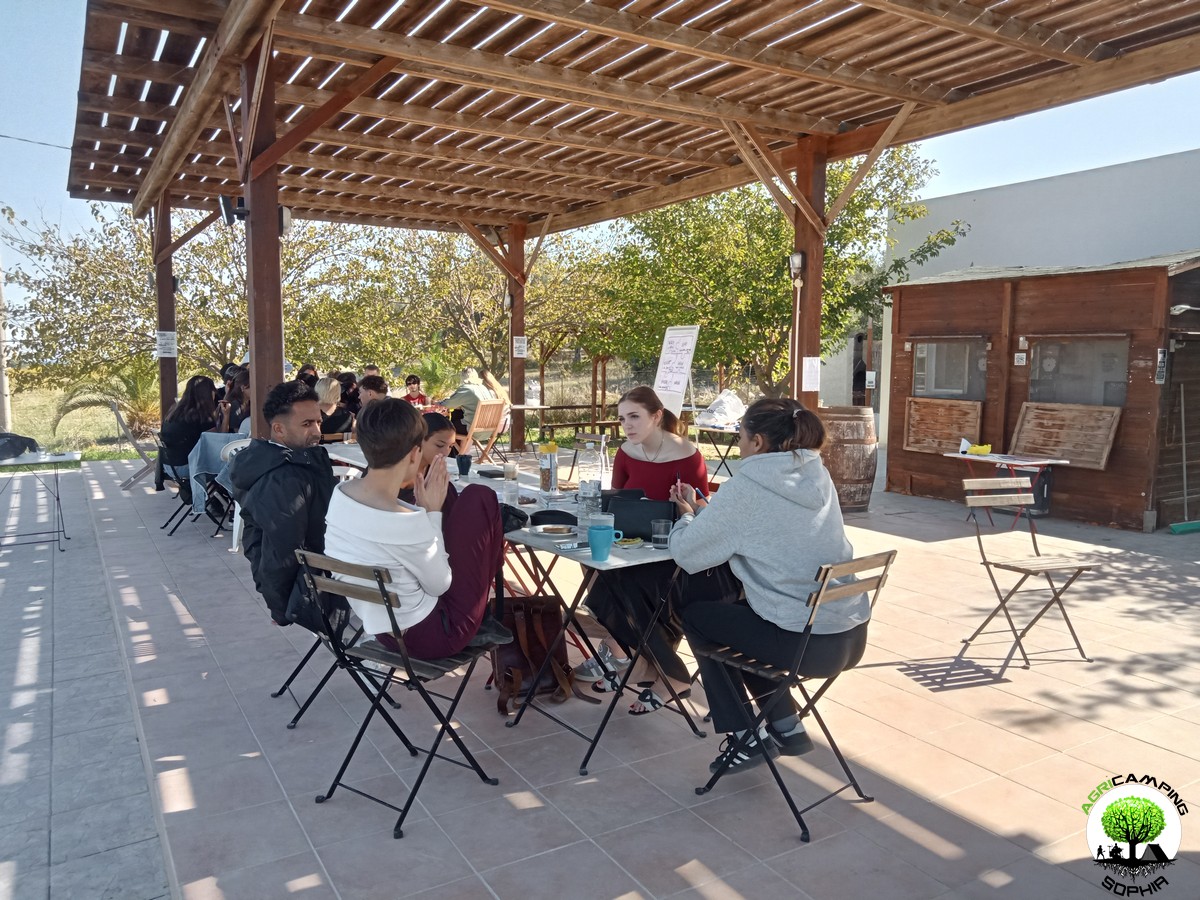 DO YOU WANT TO ORGANIZE AN ERASMUS AT AGRICAMPING SOPHIA?
DO YOU WANT TO ORGANIZE AN ERASMUS AT AGRICAMPING SOPHIA?
WHAT IS AGRICAMPING SOPHIA?
It is a campsite with tent pitches, glamping tents, mobile homes and bungalows
WHERE IS IT?
In Italy, in Sicily, near Syracuse, in Pachino: 36.736883, 15.095610
HOW TO CONTACT US?
info@agricampingsophia.it
(SPEAK ENGLISH) +39 3473079242 – (ONLY SPEAK ITALIAN) +39 3452396095
WHAT DO WE OFFER?
We offer hospitality and catering for Erasmus projects
FOR HOW MANY PEOPLE?
We can have 4-7 single beds in the Socrate Bungalow, 6-10 single beds in the Platone Mobile Homes, 4-6 single beds in the Aristotele Mobile Homes, 4 single beds in the Iblone Mobile Homes, 4 single beds in the single beds in the Empedocle Glamping Tents. In total we therefore have 18 comfortable single places or 31 single places with a fair spirit of adaptation.
IN WHICH PERIOD CAN AGRICAMPING SOPHIA BE AVAILABLE?
The most suitable periods to use our services...
 CART RUTS MODELED ON SOFT ROCK?
CART RUTS MODELED ON SOFT ROCK?
Read also RACK OR HOUSING FOR CLOGS?
Some cart ruts from the Targia district, in Syracuse, and most of the cart ruts from Granatari Vecchi, in Rosolini, give the impression of having been impressed, modelled, on a rock that was originally viscous, not entirely solid. As absurd as this hypothesis may seem, especially in Granatari Vecchi, the softness of the shapes and the at least anomalous uniformity of the rock bank, as if it were a concrete casting, which hosts the cart ruts, is unicum compared to the lithic context in the area.
In Targia this phenomenon is less impressive but if we consider the cart ruts essentially cart tracks, therefore furrowed roads indirectly resulting from the repeated passage of carts along the same route, we do not understand why such uniformity and smoothness is present, in the majority of cases, also on the parts not affected by the passage of the...
 RACK OR HOUSING FOR CLOGS?
RACK OR HOUSING FOR CLOGS?
Read also CART RUTS CUT FROM QUARRIES
In the presence of slopes, even slight ones, in some cart ruts in the Targia district, in Syracuse, central holes are found with a diameter of between 30 and 50 centimeters and a depth of 15-20 centimeters, spaced about 50 centimeters apart. Neither the position (they are not exactly in the center of the cart ruts and perfectly aligned with each other), nor the shape appear perfectly regular: either the passage of time and any wear have profoundly modified their original shape or, simply, they have never had a systematic regularity. However, the offset in position between one hole and another is never completely “off-axis”: there is always a portion about twenty centimeters wide that coincides with the same portion of the previous and subsequent hole. The best preserved and most defined holes are found in the cart ruts usually called Scala...
 CART RUTS CUT FROM QUARRIES
CART RUTS CUT FROM QUARRIES
Back to CART RUTS AND A FEW TOO MANY PROJECTIONS
I will skip any preamble, referring to what has already been written regarding the presence of cart ruts in south-eastern Sicily.
The easy academic tendency has been, in most cases concerning cart ruts, to consider them in terms of the latomie, or quarries, with which very often (for example in the cases of the Targia or Pizzuta districts) they share the same territory.
According to this theory, the carraie would have been indirectly created due to the wear of the rock at each passage of carts or sleds loaded with extracted stone blocks. I will not repeat the arguments presented so far in order to demonstrate that this is a theory that has little solid foundations on an in-depth analysis of the cart ruts. However, I will add a piece by demonstrating the implausibility of a connection between them in both chronological and functional...
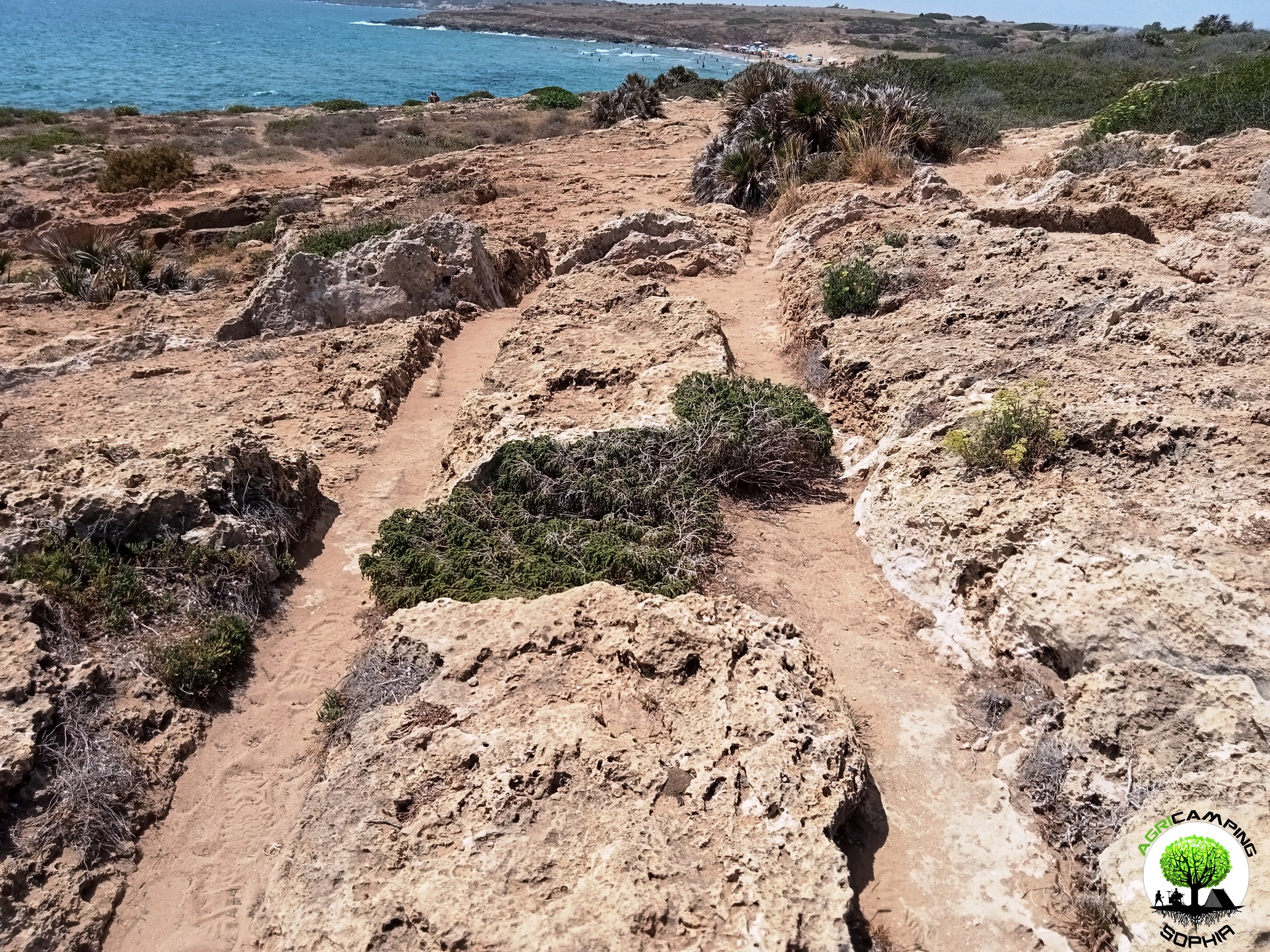 CART RUTS AND A FEW TOO MANY PROJECTIONS
CART RUTS AND A FEW TOO MANY PROJECTIONS
Read also THE POLISHING OF THE CART RUTS
I will skip any preamble, referring to to what has already been written regarding the presence of cart ruts in south-eastern Sicily.Considering the possibility that the cart ruts were gradually dug by the passage of carts pulled by pack animals, for example pairs of oxen, observing certain sections of the cart ruts present in the Granatari Vecchi district, in Rosolini, and in the Pizzuta district, close to the Vendicari Reserve, two questions arise:
1. Why force the animals to pass over rough surfaces and protrusions high, compared to the base of the furrows, even 60-70 centimeters?
2. Why, in the presence of such obstacles, not opt for a detour?
For Mottershead, Pearson and Schaefer such protrusions appeared later, since at the time of the passage of the wagons, a layer of earth covered the rocky bank, thus not making the obstacle...
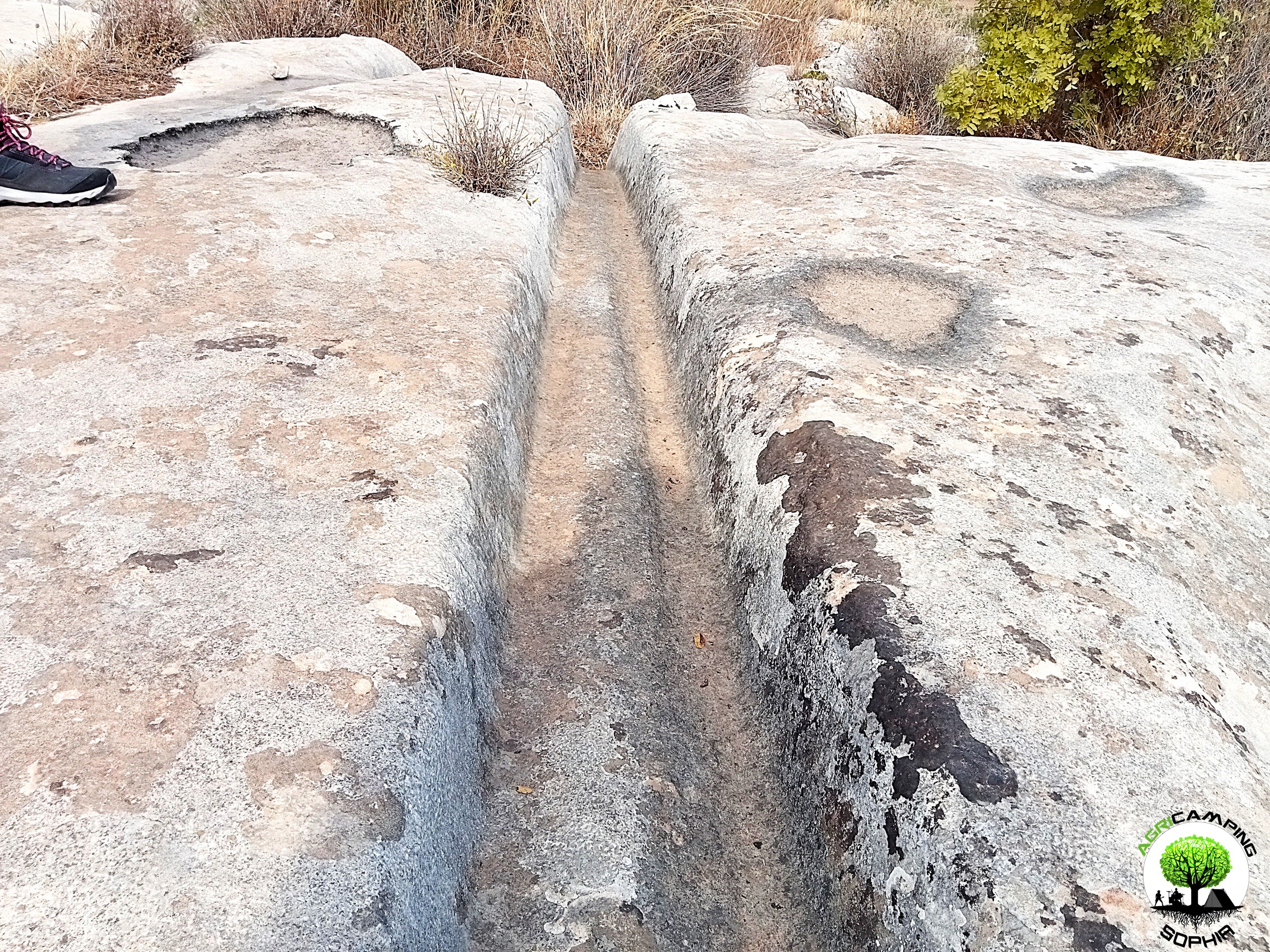 THE POLISHING OF THE CART RUTS
THE POLISHING OF THE CART RUTS
Read also THE PROBLEMATIC EDGES OF THE CART RUTS
I will skip any preamble, referring to to what has already been written regarding the presence of cart ruts in south-eastern Sicily.
To proceed with this comparison I have chosen a probable capital and the corner of a recess present in a block of the northern walls of Eloro that would seem to resemble a pinax, that is, a niche that would have housed a fresco of the heroa, but which a more careful observation refers to a system functional to the grip of the block through a pincer winch. Both elements, like the curt ruts, have remained at the mercy of the elements for millennia, and are therefore subject to comparable wear and tear due to the passage of time. The finishing of the capital should be of a high standard, since it is an architectural element that also has an aesthetic function. The recess, on the other hand, should have...
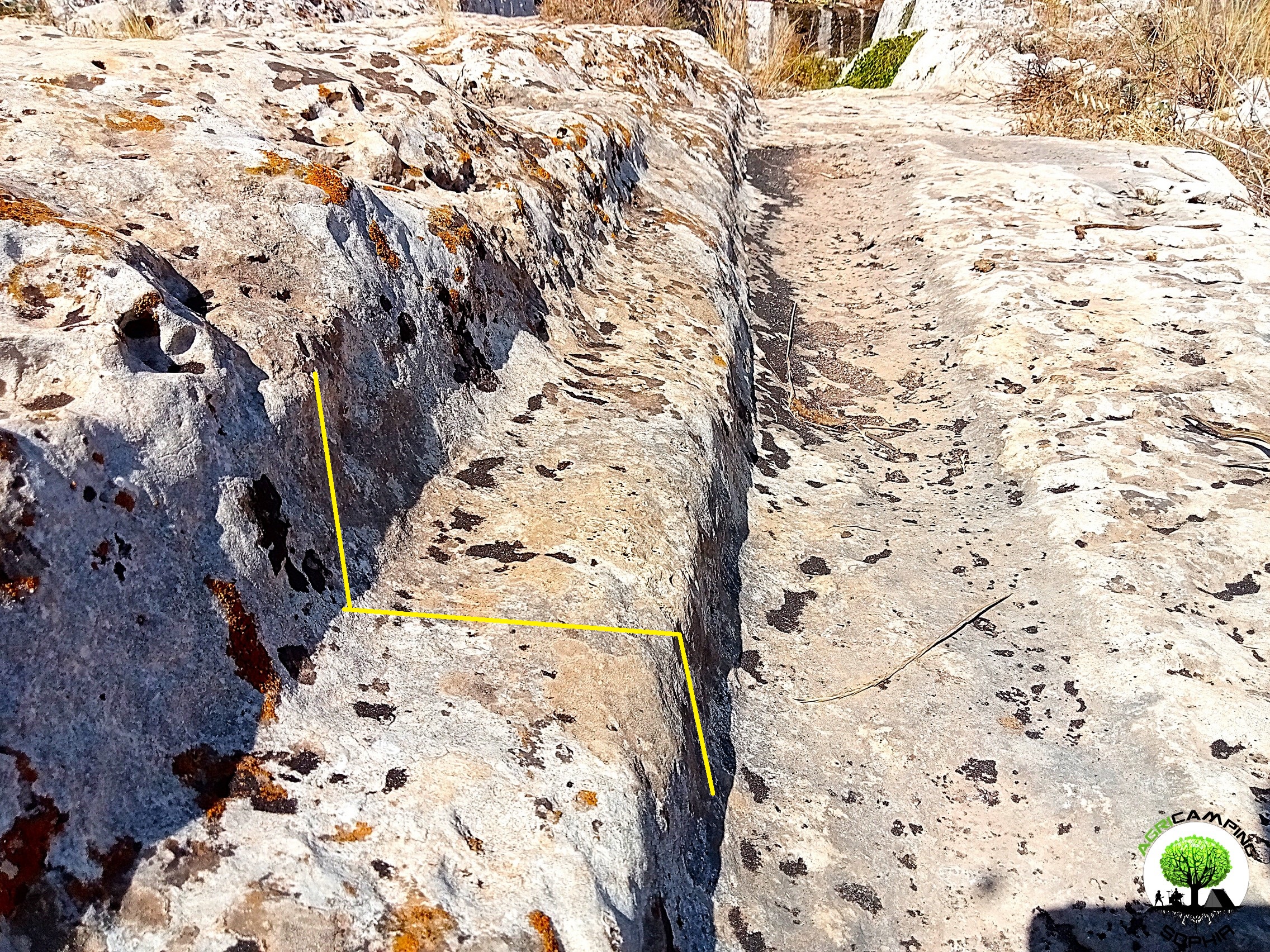 THE PROBLEMATIC EDGES OF THE CART RUTS
THE PROBLEMATIC EDGES OF THE CART RUTS
I will skip any preamble, referring to to what has already been written regarding the presence of cart ruts in south-eastern Sicily.As can be seen in other sites around the world, in some cart ruts I visited, in particular in the Cugni district in Pachino, in the Granati Vecchi district in Rosolini and in the Targia district in Syracuse, a clear border can be seen, a sort of frame, next to the grooves, more marked externally, barely noticeable internally.
The borders I measured have a width of 14-20 centimeters and a height of 8-10 centimeters.
Not all cart ruts have such frames present or particularly evident, regardless of the degree of wear or degradation. They are found above all in cart ruts with less deep grooves.
As already described in detail, given the presence of furrows with a depth of even 65-70 centimeters, the wheels of a possible vehicle would have had to have a...
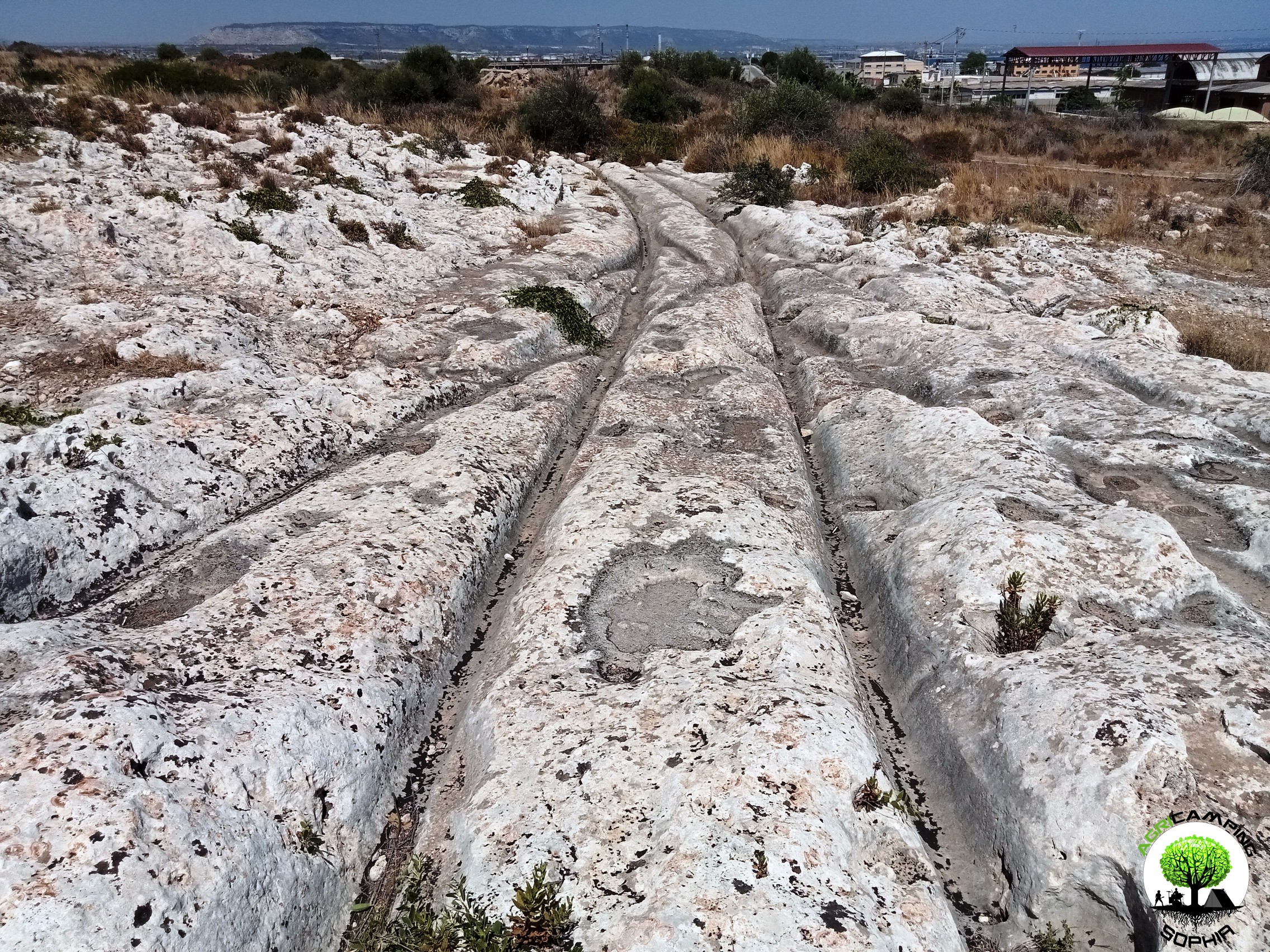 THE PROBLEM OF CART RUTS IN SOUTH-EASTERN SICILY (PART FOUR)
THE PROBLEM OF CART RUTS IN SOUTH-EASTERN SICILY (PART FOUR)
Click here to return to third part
Clapham Junction
As in the Maltese site Misrah Ghar Il-Kbir, also in the Targia and Granatari Vecchi districts the cart ruts intersect and cross each other in a similar way to the track switches in a railway station. The nickname Clapham Junction that was given by David H. Trump to the Maltese site, derives precisely from the similarity with the famous English railway station. For Sagona these are agricultural furrows and water channels, for Mottershead, Pearson and Schaefer these are abandoned paths due to obstacles and wear. Obviously we do not know what the morphology of the Syracuse and Rosolini territory was at times when the cart ruts were traced, but considering the current context, there certainly would have been no agricultural reason to build them, given the presence of fertile land, springs and fresh water courses just a few kilometers...


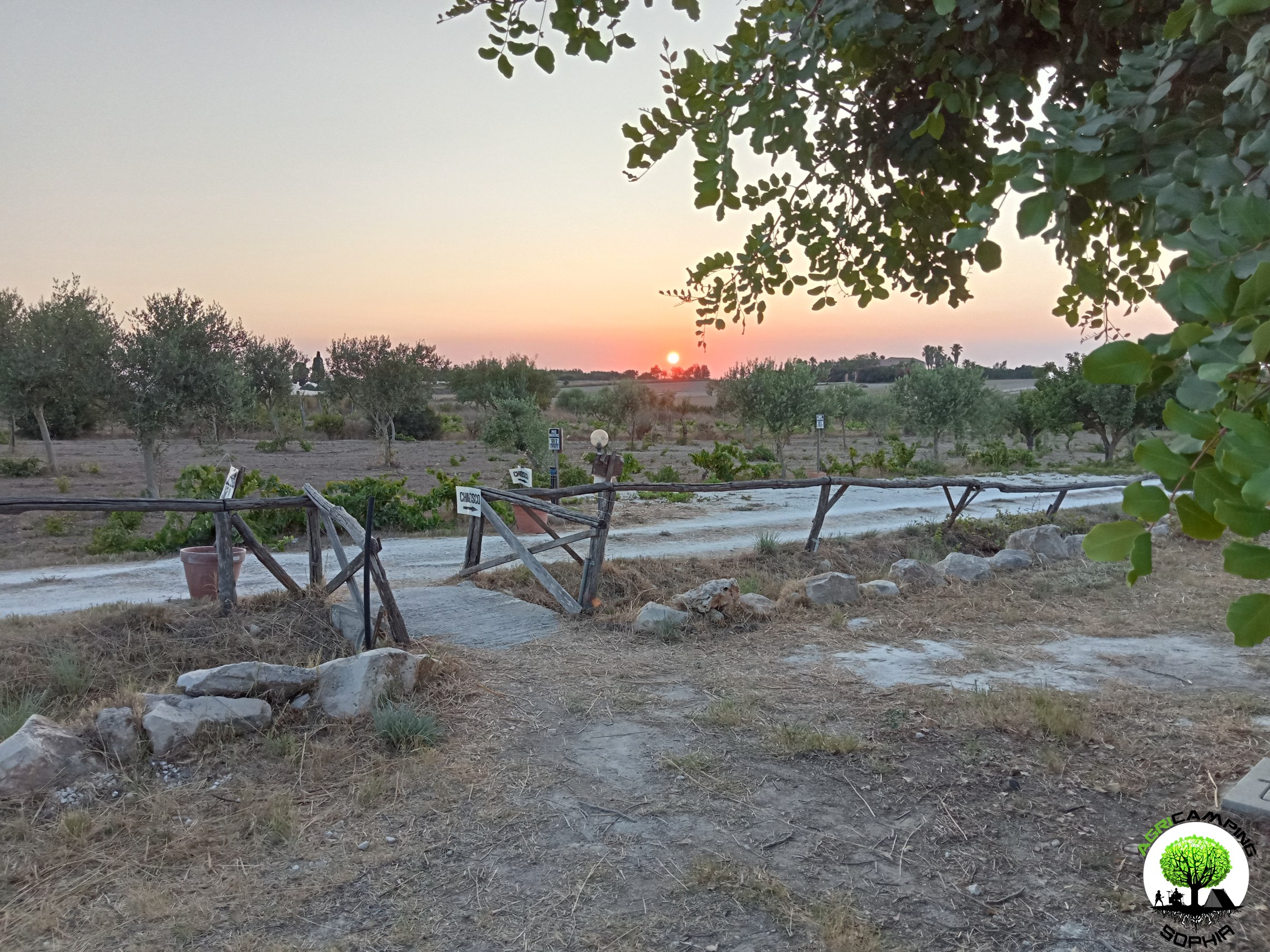
 DO YOU WANT TO ORGANIZE AN ERASMUS AT AGRICAMPING SOPHIA?
DO YOU WANT TO ORGANIZE AN ERASMUS AT AGRICAMPING SOPHIA? CART RUTS MODELED ON SOFT ROCK?
CART RUTS MODELED ON SOFT ROCK? RACK OR HOUSING FOR CLOGS?
RACK OR HOUSING FOR CLOGS? CART RUTS CUT FROM QUARRIES
CART RUTS CUT FROM QUARRIES CART RUTS AND A FEW TOO MANY PROJECTIONS
CART RUTS AND A FEW TOO MANY PROJECTIONS THE POLISHING OF THE CART RUTS
THE POLISHING OF THE CART RUTS THE PROBLEMATIC EDGES OF THE CART RUTS
THE PROBLEMATIC EDGES OF THE CART RUTS THE PROBLEM OF CART RUTS IN SOUTH-EASTERN SICILY (PART FOUR)
THE PROBLEM OF CART RUTS IN SOUTH-EASTERN SICILY (PART FOUR)